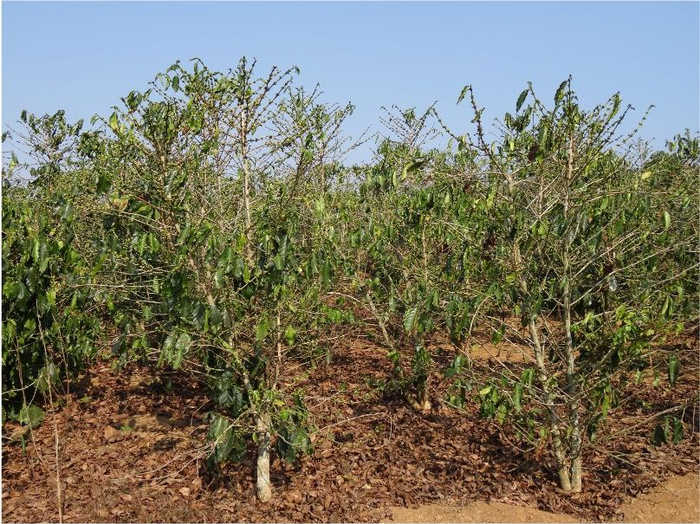Coffee is essential to the economies of coffee-producing regions. According to research reported in PLOS Climate by Doug Richardson of CSIRO Oceans & Atmosphere, Hobart, Tasmania, Australia, and co-workers, climate change may have a substantial impact on land where coffee is grown.
 Coffee plant under stress due to drought. Image Credit: Vivekananda Mittahalli Byrareddy, CC-BY 4.0
Coffee plant under stress due to drought. Image Credit: Vivekananda Mittahalli Byrareddy, CC-BY 4.0
Although coffee plants are known to be susceptible to changes in climate, the effect of synchronous climate hazards happening in multiple coffee-growing areas is unclear. Scientists systematically analyzed climate hazards and compound events in coffee-producing areas from 1980 to 2020 to fully understand how large-scale climate modes like El Niño Southern Oscillation (ENSO) might well give rise to simultaneous coffee crop failures in multiple countries.
Researchers identified 12 climate hazards that endanger coffee crops in the top 12 coffee-producing countries, such as outpacing the daily maximum temperature that coffee plants can withstand.
Between 1980 and 2020, the number of climate hazards and compound events accelerated in every coffee-growing region, according to scientists. Furthermore, the types of hazards had also transitioned from overly cool to overly warm conditions. More investigation is necessary to determine what kinds of adaptations might be effective in mitigating global coffee crop failures.
The authors stated, “Our results suggest that El Niño is the primary mode in explaining compound climate event variability, both globally and regionally. Region-level hazards are therefore indicative of systemic risk to coffee production, rather than local risk.”
They added, “As with other crops, a systemic risk to the global coffee trade is posed by synchronized crop failures. With climate change projections showing a continued rise in temperatures in the tropics is likely, we posit that coffee production can expect ongoing systemic shocks in response to spatially compounding climate hazards.”
The investigators concluded: “Since 1980, global coffee production has become increasingly at risk of synchronized crop failures, which can be driven by climate hazards that affect multiple key coffee-producing areas simultaneously.”
Journal Reference:
Richardson, D., et al. (2023) Synchronous climate hazards pose an increasing challenge to global coffee production. PLOS Climate. doi.org/10.1371/journal.pclm.0000134.